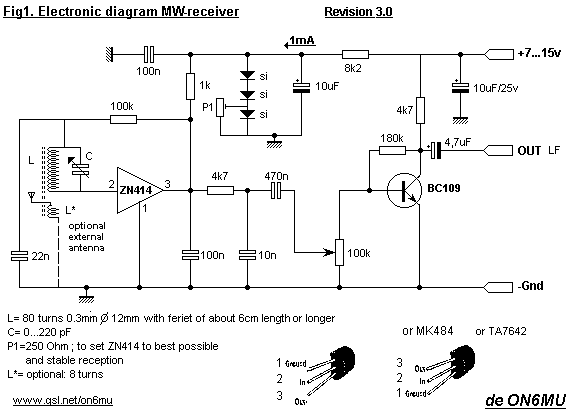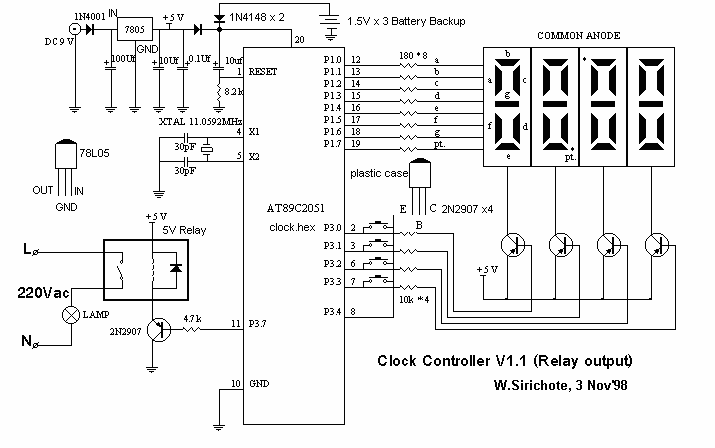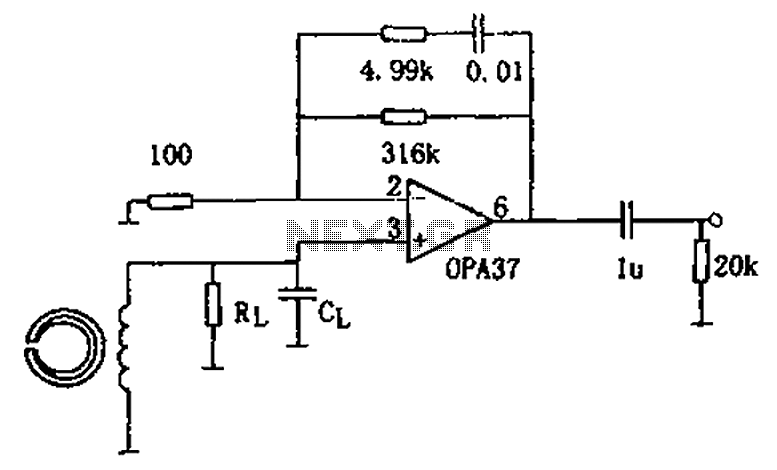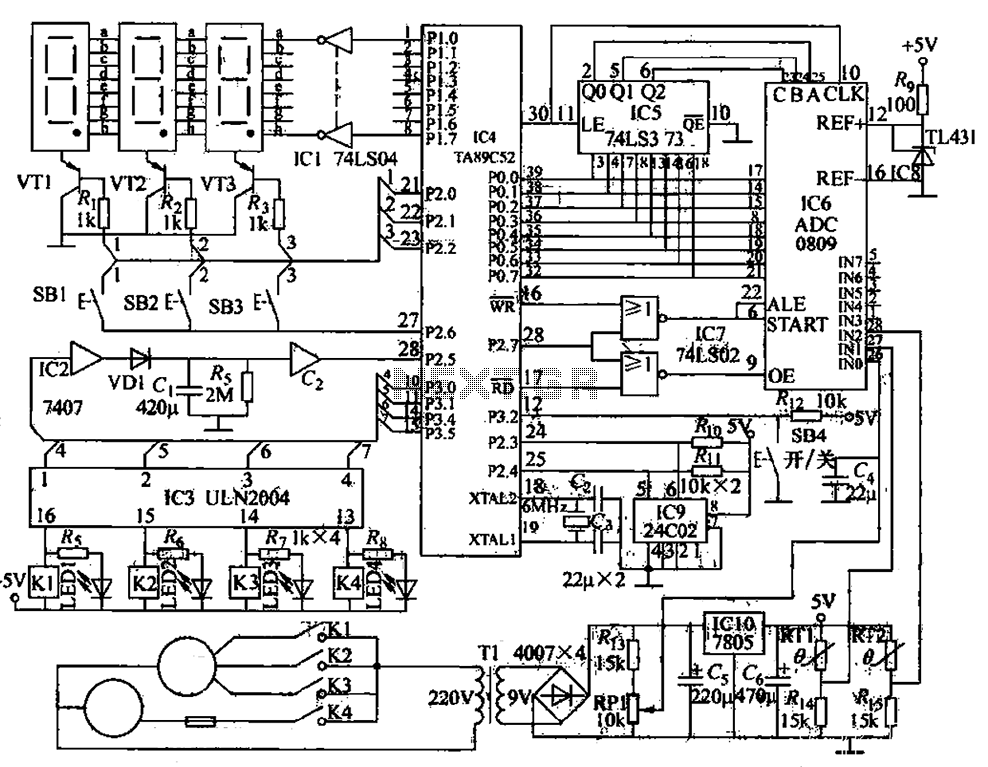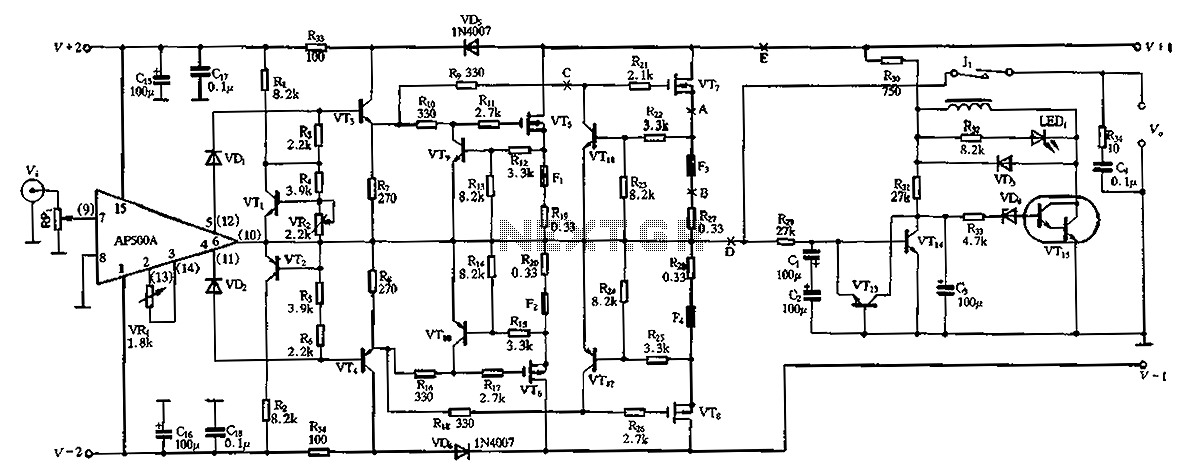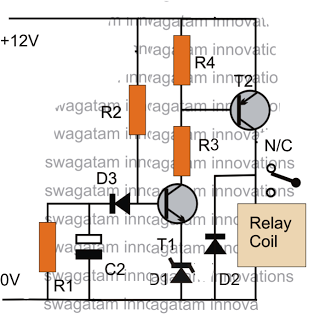
3904 3906 Siren Circuit
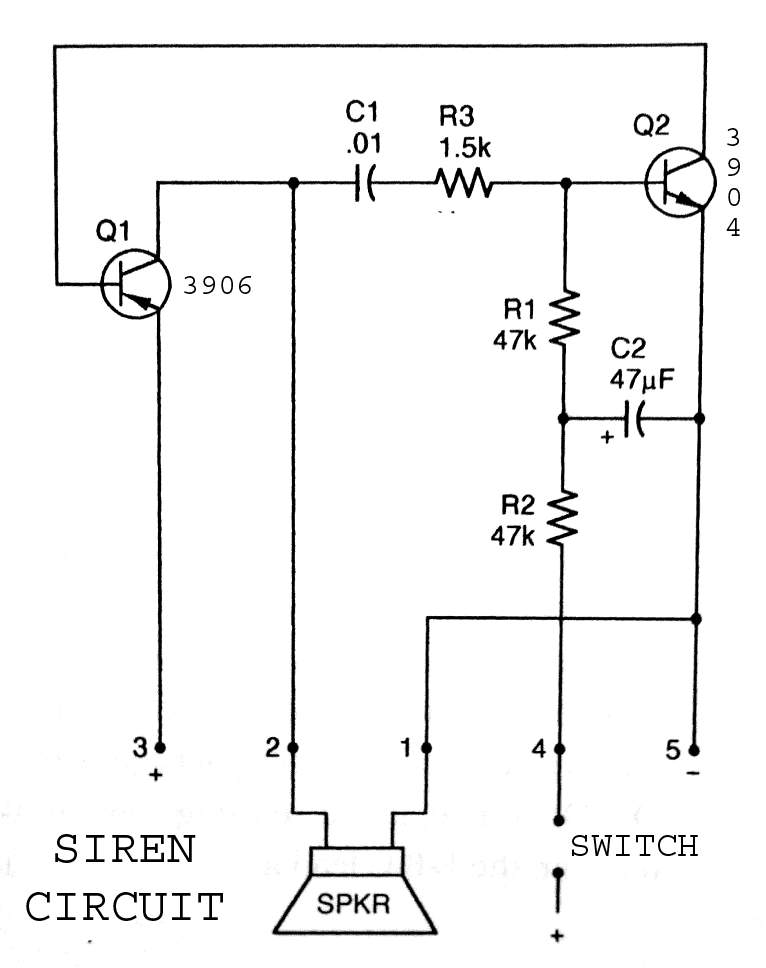
3904 3906 Siren Circuit. The circuit generates a wailing siren sound when the switch is activated.
The 3904 3906 Siren Circuit is designed to produce a distinctive wailing sound, commonly used in alarm systems and signaling devices. The circuit utilizes bipolar junction transistors (BJTs) 3904 and 3906, which function as the primary amplifying elements.
When the circuit is powered on by activating the switch, the initial current flows through the base of the 3904 transistor, causing it to enter saturation. This action triggers the 3906 transistor, which is configured in a complementary arrangement, allowing it to also conduct. The interaction between these two transistors creates a feedback loop that leads to rapid oscillations.
The frequency of the oscillation can be adjusted by incorporating passive components such as resistors and capacitors in the feedback path. Typically, a capacitor is connected between the collector of the 3904 transistor and the base of the 3906 transistor, while a resistor is placed in series with the base of the 3904 transistor. This configuration determines the charging and discharging time of the capacitor, thereby controlling the pitch and duration of the siren sound.
Additional components may include a loudspeaker or piezoelectric element to convert the electrical signal into audible sound. The circuit may also include diodes for protection against back EMF if inductive loads are used.
Overall, the 3904 3906 Siren Circuit is an effective and straightforward solution for generating a wailing siren sound, suitable for various applications in security and alert systems.3904 3906 Siren Circuit. The circuit produces a wailing siren sound when the switch is turned on.. 🔗 External reference
The 3904 3906 Siren Circuit is designed to produce a distinctive wailing sound, commonly used in alarm systems and signaling devices. The circuit utilizes bipolar junction transistors (BJTs) 3904 and 3906, which function as the primary amplifying elements.
When the circuit is powered on by activating the switch, the initial current flows through the base of the 3904 transistor, causing it to enter saturation. This action triggers the 3906 transistor, which is configured in a complementary arrangement, allowing it to also conduct. The interaction between these two transistors creates a feedback loop that leads to rapid oscillations.
The frequency of the oscillation can be adjusted by incorporating passive components such as resistors and capacitors in the feedback path. Typically, a capacitor is connected between the collector of the 3904 transistor and the base of the 3906 transistor, while a resistor is placed in series with the base of the 3904 transistor. This configuration determines the charging and discharging time of the capacitor, thereby controlling the pitch and duration of the siren sound.
Additional components may include a loudspeaker or piezoelectric element to convert the electrical signal into audible sound. The circuit may also include diodes for protection against back EMF if inductive loads are used.
Overall, the 3904 3906 Siren Circuit is an effective and straightforward solution for generating a wailing siren sound, suitable for various applications in security and alert systems.3904 3906 Siren Circuit. The circuit produces a wailing siren sound when the switch is turned on.. 🔗 External reference
Warning: include(partials/cookie-banner.php): Failed to open stream: Permission denied in /var/www/html/nextgr/view-circuit.php on line 713
Warning: include(): Failed opening 'partials/cookie-banner.php' for inclusion (include_path='.:/usr/share/php') in /var/www/html/nextgr/view-circuit.php on line 713
